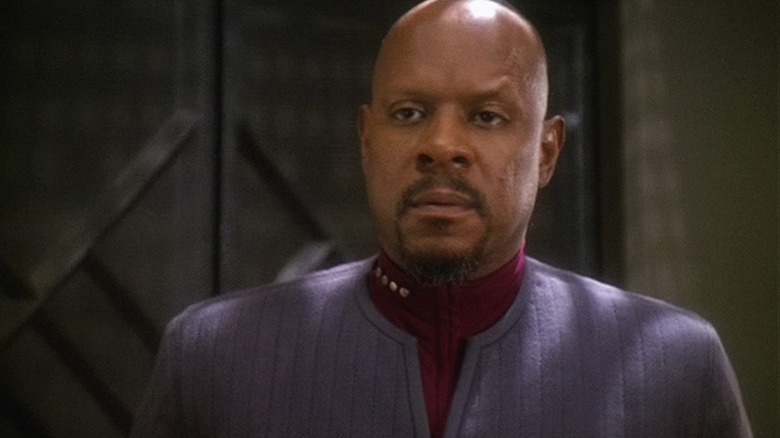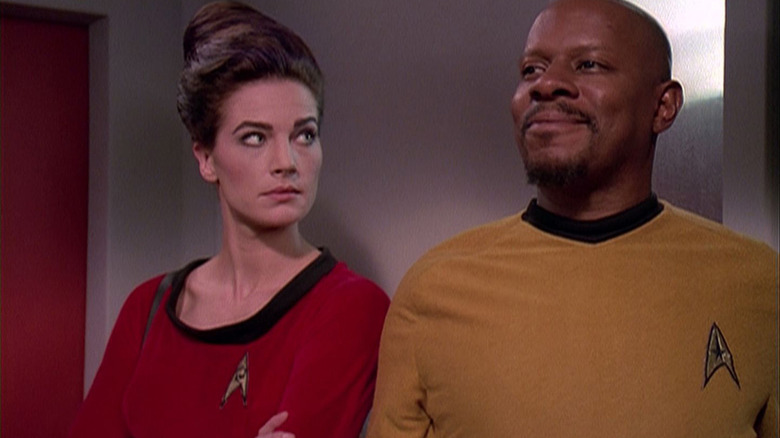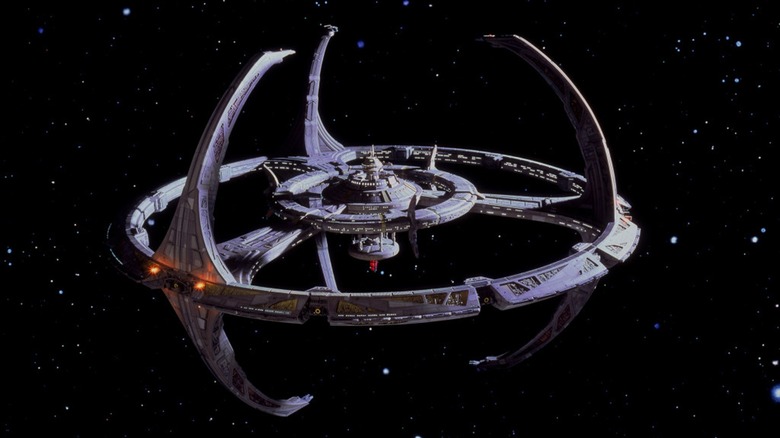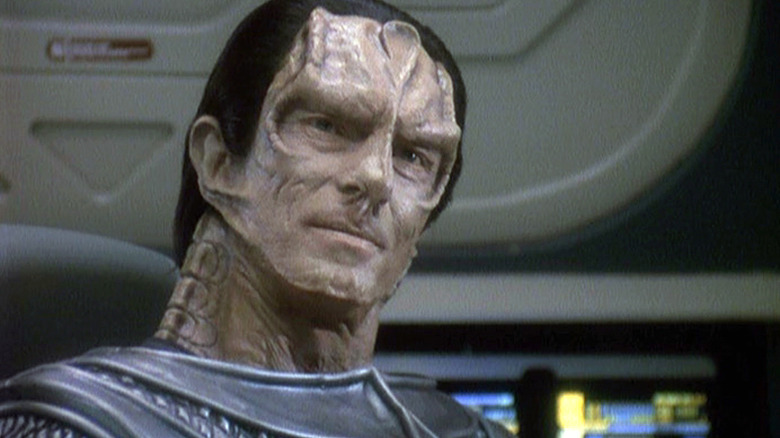How The 1992 LA Riots Changed The Nature Of Star Trek: Deep Space Nine
To briefly look back: on March 3, 1991, a man named Rodney King was pulled from his car by several L.A.P.D. officers following a high-speed chase on the 210 freeway in the San Fernando Valley. He was pushed to the ground and beaten savagely by the cops. The beating was captured on video and proliferated on local news broadcasts as yet another example of police brutality, especially as it was directed toward L.A.'s Black community. It should be noted that Darryl Gates, the local police chief, had been a key player in Operation Hammer, a dramatic push to aggressively militarized the Los Angeles Police Department. Under Gates' rule, complaints about police brutality rose 33% for a five-year period beginning in the mid-'80s. Hate and violence ran rampant in the police department, and it was allowed to go unchecked for years.
The cops who beat up King were arrested and put on trial for using excessive force. On April 29, 1992, a jury (with no Black people on it) acquitted the four cops of assault, and three of them of using excessive force. The cops were going to go free. This was a breaking point for many of L.A.'s citizens, and rage-fueled riots broke out. Arson and theft were rampant. Racial tension had boiled over. Darryl Gates was forced to resign. Sadly, there wasn't sweeping reform in the L.A.P.D., and police violence remains a problem to this day.
1992 was also when "Star Trek: Deep Space Nine" was in development. In the book "The Fifty-Year Mission: The Next 25 Years: From The Next Generation to J. J. Abrams," edited by Mark A. Altman and Edward Gross, DS9 co-creator Michael Piller recalls the effect the L.A. riots had on production.
Accentuate the negative
"Deep Space Nine" would premiere in January of 1993, and Micahel Piller was writing the pilot "Emissary" when the riots broke out. Piller admitted in the book that he was often criticized for being a very negative person. He and co-creator Rick Berman had completed their first draft, and Berman was fine with it. Piller, however, insisted on a rewrite to make the tone darker. Deep Space Nine, the fictional station itself, was meant to be a social center as well as the site of hard labor and military oversight. According to Piller, the studio execs wanted the station's Promenade to look like the Beverly Center, a posh mall in Beverly Hills. The first shot needed to be a shot of people gambling and having a good time.
Piller and Berman did adhere to the studio mandate. When violence broke out outside their own windows, however, they realized that they needed something more profound. Some more, well, "Star Trek." Piller said:
"I wrote it that way, and I realized it didn't work. Sadly, though, while I was going through this agonizing process, we had the riots in Los Angeles, and both Rick and I wanted to somehow say something in our show about humanity coexisting and coming together. And we wanted to build this into the alien interaction that we had in the second hour of the script."
Piller also noted that the "nice mall" vibe was all wrong for the show. Deep Space Nine was meant to be broken, a place where violence happened, a place that was ruined and run down. It needed to be a hard, even undesirable job for Commander Sisko (Avery Brooks), the show's lead character.
The Beverly Center vs. South Central L.A.
Perhaps notable in the middle of all this is that Brooks was the first Black actor to play a lead "captain" role in a "Star Trek" series.
Piller noted that if Deep Space Nine was a posh and well-moneyed shopping mall, it wouldn't provide any dramatic tension. Or, in his words:
"I had also started thinking that it was not a dramatic situation for a man to come to the Beverly Center. It's not very dramatic for someone to go to their favorite mall and decide to stay. But for a man who goes to South Central Los Angeles and finds it in ruins and decides to stay, that's dramatic. I argued with Rick that we should come to a space station that's in ruins and that Sisko must begin the rebuilding process in the first hour in order to be driving the story."
Piller got his way. The pilot episode of "Deep Space Nine" saw Sisko arriving at the station after it had been trashed. Nothing worked. It was dark and uncomfortable. There weren't beds in most of the crew's quarters. The local Bajoran commander (Nana Visitor) had her hands full, and an organized criminal element was at work on the station.
Showrunner Ira Steven Behr pointed out that Sisko's job wasn't supposed to look fun. He noted that previous "Star Trek" captains like Kirk and Picard had the exciting job of exploring the galaxy and engaging in friendly, diplomatic missions. Sisko had to stay in one place and tackle the massive job of rebuilding a station and aid in the entire political reconstruction of the planet Bajor below. Kirk and Picard, Behr said, were explorers. Sisko was a builder.
Trek's ideals
For Piller, it was vital not to succumb to the "fun" parts of "Deep Space Nine." The show did contain elements of comedy and several funny characters, but what needed to remain at the fore was the "Star Trek" commitment to nonviolence. And, on "Deep Space Nine," that was going to be a harder struggle than what was seen on previous Trek shows. When Los Angeles broke out in violence, many began to contemplate the injustice that led to it, as well as the righteous rage of the people. For Piller, he wanted to sift through the rage and cling to ideas of diplomacy and nonviolence. He said:
"I was listening to the radio on the anniversary of Martin Luther King's birthday — a man who stood firm on the subject of violence — that violence is not the answer. And it didn't matter what anybody promoted him to do — whether you were Black or white — he refused to find a violent solution to the problems, the very severe problems of this country. As I wrote 'Star Trek,' there was no greater responsibility than to continue to tell that message in any way that I could."
For many Trekkies, it was the struggle that made "Deep Space Nine" so appealing. For Captain Picard, it might have been easier to remain morally stalwart and politically resolute because he had the benefit of living in a socialist technological utopia. He and the people he worked with rarely wanted for anything, allowing them to focus on their interests, their personal relationships, and bettering themselves. "Deep Space Nine" took place in a world racked by chaos, a world that looked like the one outside of Piller's window.
A utopia, it said, requires constant work.



